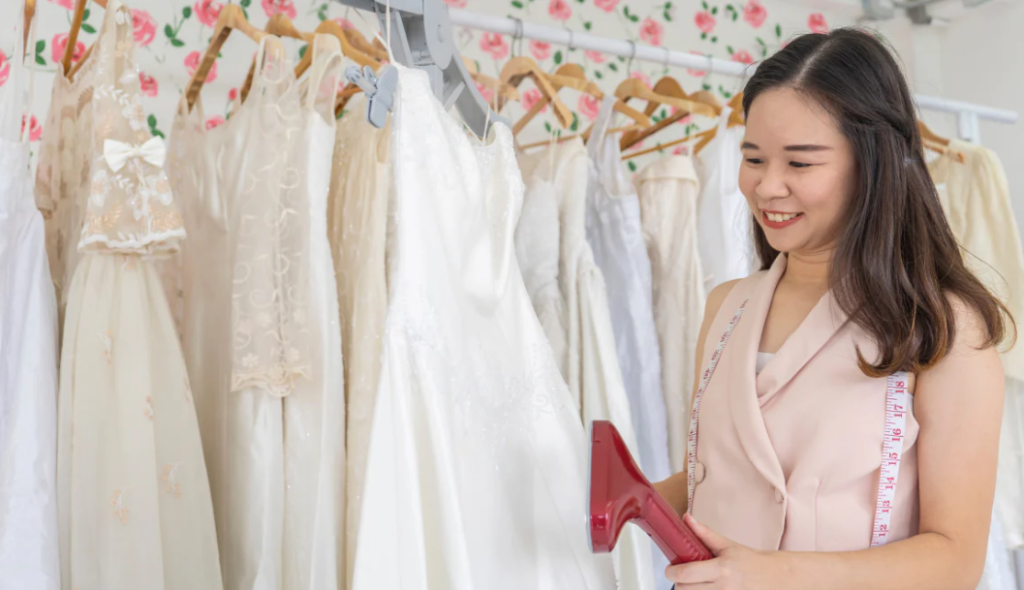Table of Contents:
- The Timeless Benefits of Cleaning and Preserving Your Wedding Dress
- Why Post-Wedding Care Is Crucial
- Common Stains and How to Tackle Them
- The Science of Fabric Preservation
- Choosing the Right Preservation Method
- Emotional and Sentimental Value
- Economic Benefits of Preservation
- How to Find Trusted Professionals
Why Post-Wedding Care Is Crucial
Your wedding dress is much more than a simple garment; it is a tangible memory reflecting one of your life’s most significant days. After the festivities and celebrations end, many brides find themselves emotionally attached to their gowns, sometimes storing them away with hopes of lasting a lifetime. However, the process of wedding dress cleaning and preservation is vital. The reality of leaving a wedding dress exposed to environmental variables can lead to irreversible damage. Dust, humidity, and unexpected spills during the festivities can all gradually alter the sheen and integrity of the fabric if not treated promptly.
Consider the dress an exquisite work of art, requiring careful maintenance to preserve its original grace and splendor. As the years pass, materials—especially those as delicate as lace or silk—may suffer from discoloration and deterioration if not attended to appropriately. Therefore, taking immediate steps to clean and preserve your gown is essential to retain its beauty and elegance. Such careful and proactive measures ensure the dress can be admired and cherished long after the wedding bells rang.
Common Stains and How to Tackle Them
The wedding day is often a whirlwind of emotions, events, and interactions, making it a near certainty that accidental stains will make their way onto your dress. Stains come in many forms, from a sprinkle of celebratory champagne to lipstick hugs. While some may seem harmless, ignoring them can lead to lasting damage. The key to maintaining the pristine condition of a wedding dress is dealing with these stains immediately through proper cleaning techniques.
Professional wedding dress cleaners have the expertise and tools to tackle various stains without compromising the delicate fabrics. They understand the chemical makeup of individual stains and employ specialized cleansers or techniques designed to combat each challenge. Such meticulous treatment restores your dress to a near-original condition and protects the essence of those special moments encapsulated in your gown.
The Science of Fabric Preservation
Fabric preservation is a scientific process that revolves around maintaining your wedding dress’s original texture, color, and form. Numerous dresses are constructed with intricate fabrics like silk, satin, and tulle—which captivate and require careful handling. The preservation process involves techniques that stabilize and protect these fabrics from yellowing and breaking down, ensuring longevity.
This process involves pH-balanced cleansing and protective storage solutions that prevent oxidative damage and other environmental impacts. By stabilizing the delicate structures within the fabrics, preservation helps maintain a dress’s structural integrity. These tailored processes address the specific needs of each fabric type, affording your dress long-lasting preservation. As a result, your dress remains a testament to your remarkable day and an exquisite piece of beauty preserved over time.
Choosing the Right Preservation Method
The variety of preservation methods available can be overwhelming. Vacuum sealing, popular for its airtight protection, keeps out moisture and pests. On the other hand, acid-free boxing allows air circulation while guarding against direct light, dust, and exposure-related wear. Each method comes with specific benefits, and deciding on one involves considering various factors, including the type of material and your long-term intentions for the dress.
Before deciding, consult with preservation experts who can guide you based on the dress’s fabric and detailing. By understanding the advantages of each method, you can select an approach that aligns with your preservation goals—be it for nostalgia, future use, or as a treasured family heirloom.
Emotional and Sentimental Value
For many, a wedding dress holds profound emotional and sentimental value. It’s not merely an item of clothing but a visualization of love and a milestone in one’s life journey. By preserving your dress, you allow for the opportunity to revisit those memories physically, possibly presenting it as a family heirloom to future generations.
There is indescribable joy in potentially sharing this gown, rich with stories, with your children or grandchildren. A carefully preserved dress is more than just a piece of fabric; it’s a narrative cloth that can relate moments of love, joy, and serenity experienced throughout a significant occasion in your family’s history.
Economic Benefits of Preservation
Beyond its sentimental significance, preserving your gown can also offer economic advantages. Should you consider selling or renting it in the future, a preserved dress stands out as a more appealing option than one that has not been well-maintained. Proper preservation maintains the condition and quality, preventing permanent damage that can devalue the garment over time.
In a market that increasingly values sustainability and eco-friendly practices, renting out or repurposing a well-preserved dress can reduce fashion waste while offering financial returns. It’s an investment in the dress’s longevity and an expression of fiscal responsibility that aligns with contemporary consumer values.
How to Find Trusted Professionals
Securing a trusted professional for your gown’s preservation is essential in ensuring quality results. Extensive research and careful selection of preservationists will help you effectively handle the process. By placing your gown in capable hands, you safeguard its brilliance and beauty, allowing it to continue symbolizing the joy and emotions of your special day for years to come. This critical choice can turn your wedding dress into a lasting treasure that continues to tell your story to future generations.



